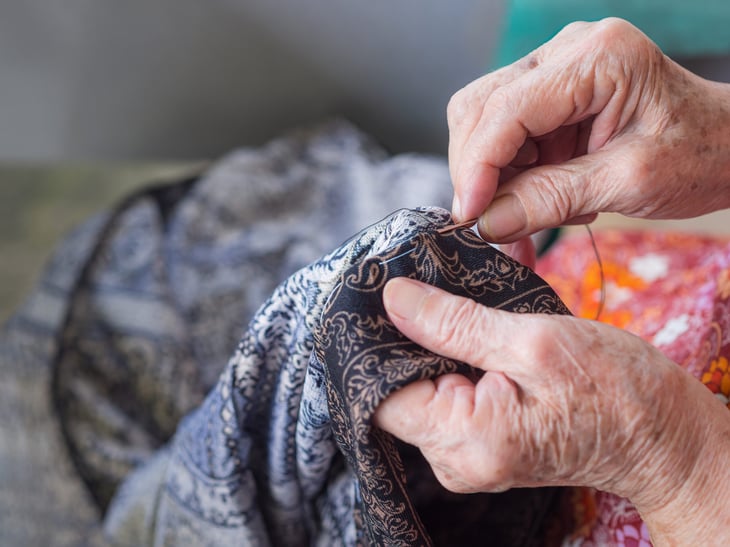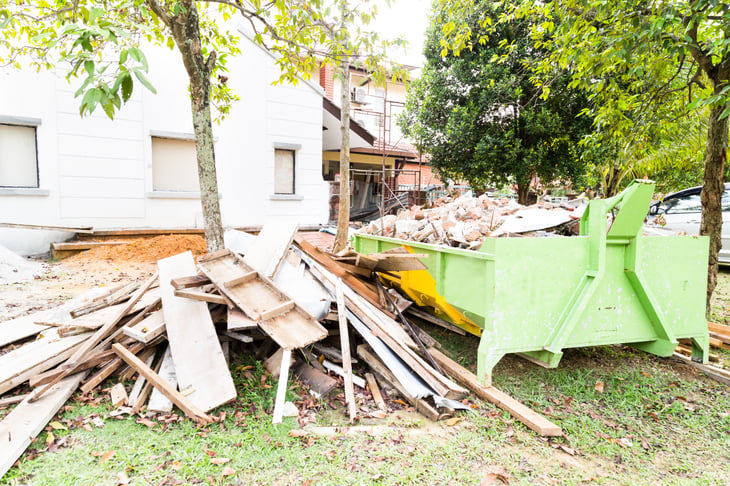
When you were a kid, did you roll your eyes at the lengths your parents or grandparents went to conserve, save and find new uses for old stuff?
I did. But the older I get, the more I appreciate many of those nearly forgotten frugal strategies.
With society’s renewed focus on green living and simplicity, maybe we only need to look back a couple of generations to find our way forward. Here are some frugal strategies worth resurrecting.
1. Mending

My aunt used to darn her husband’s worn socks and “flip” the collars on his work shirts.
Not sure how to flip a shirt collar? You’re not alone. Here’s how my aunt did it:
When a collar became discolored or frayed, she would detach it at the seam, turn it over, and reattach. The worn-out portion would become the invisible underside, leaving only pristine fabric showing.
It sounds time-consuming today, but her strategy doubled the life of my uncle’s work shirts and saved her family money.
With the current high cost of clothing, it’s time to rediscover this lost art of mending. With just a few sewing lessons and a secondhand machine, you could expand the life of your clothes — and stretch your budget.
2. Hang-drying clothes

Before electric dryers, people dried their clothes on a clothesline. Just imagine it — fresh breezes, no energy cost, no filters to clean and no static cling. Even better, hang-drying is one way to make your clothes last longer.
Although strict zoning regulations prevent outdoor line-drying in some areas, air-drying is always an option. If you live in an apartment or condo, consider using a drying rack. Clothes may come out a bit stiff, but a five-minute tumble in the dryer will soften them right up.
3. Gardening

When I was young, my parents planted a huge garden every spring. We grew corn, cucumbers, tomatoes, potatoes, lettuce and dill, year in and year out. That garden was a lot of work, but it was also a source of pride, and it cut our family food budget by one-third.
The lawn-to-garden movement is giving new life to the old idea of fresh, homegrown food. From windowsill herb pots to neighborhood co-op garden programs, growing our own grub is becoming cool again.
Not sure how to grow great food? Start slowly. Till a small patch in your backyard or start a simple container garden.
4. Canning

For rural families everywhere, canning fruits, vegetables and meat used to be a way of life. Food stability through long hard winters was the goal, not saving money.
But canning is a powerful frugal strategy that’s as relevant today as it was 100 years ago. Besides trimming your grocery budget, canning gives you control over what goes into your food (and in turn, your body), and dramatically reduces packaging waste.
Intimidated by the thought of canning? Don’t be. Learning how to can is relatively simple, and the equipment required is usually available secondhand.
5. Bartering

Exchanging one service for another or trading items for services was a time-tested method of commerce long before cash became king.
But all across America, bartering is making a gradual comeback. People are finding new ways to save money, help one another and build stronger community relationships.
A good friend of mine helps a salon owner market her business online in exchange for a regular cut and color. Another takes care of his neighbor’s lawn in exchange for access to her apple trees in the summer. (The landscaper’s wife is a master pie maker.)
Our grandparents would be proud.
6. Buying used

When my parents bought their home in the 1970s, they furnished much of it with secondhand items. Bedroom sets, desks and the family room sofa were all from auctions and estate sales. Mom and Dad knew how to find quality used furniture and selected each piece carefully.
Amazingly, most of that furniture is still in use today, nearly 50 years later.
Why is buying used such a smart money move? First, it lessens the impact of depreciation — the decline in value from “new” to “used” is precipitous.
Second, depending on the state where you live, items purchased from a nonprofit thrift store may be sales tax-free.
Third, there are fewer surprises with most used items — they’ve proven their worth by standing the test of time.
If you’re skittish about buying used, start slowly. Explore your local Salvation Army or Goodwill outlet and see what catches your eye.
7. Salvaging

Just a few generations ago, people seemed more attuned to the resources required to manufacture goods. As a result, even the humblest items were valued and saved for future repurposing.
From rubber bands to barn boards and from jelly jars to flour sacks, salvage has played an important part in our history — especially during the Great Depression and other times of crisis. Maybe it’s time to reclaim this part of our national heritage and find new ways to salvage what’s around us.
8. Creative reuse

Many years ago in Chicago, I had a roommate who saved used yogurt containers. When I first noticed dozens of them stacked in the kitchen, I remember thinking, “This guy either has the healthiest digestive system in the city, or he’s a hoarder.”
Later, I discovered that he used the containers to start seedlings in the spring. As the starts matured, he’d replant them in the backyard. By summer, the whole place was alive with herbs, tomato vines and flowers.
This is a simple example of giving new life to an item that would otherwise be destined for a landfill. But there are countless others. Vintage Mason jars can become unique pendant lights, ornate doors can be transformed into one-of-a-kind headboards, and old tires can find new life as classic tree swings.
Opportunities for creative reuse are everywhere; we just have to look with a little imagination and inspiration.
9. Waiting

Waiting: It’s the simplest strategy of all but the toughest to stick to. In previous generations, major purchases meant major deliberation. Waiting was the norm — waiting to find a better deal, to determine if an item was a need or just a want, to consider how a purchase would affect our budget.
Today’s easy consumer credit has turned delayed gratification into a quaint, old-fashioned notion. From shoes to smartphones, anything can be an impulse buy.
But there’s real power in hitting the pause button. Building better shopping habits helps us stick to our budgets, achieve larger financial goals and overcome the 24/7 marketing machine that keeps so many people in debt for decades.





Add a Comment
Our Policy: We welcome relevant and respectful comments in order to foster healthy and informative discussions. All other comments may be removed. Comments with links are automatically held for moderation.